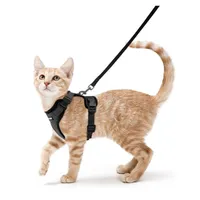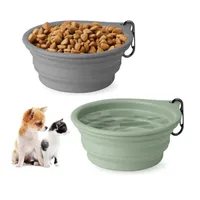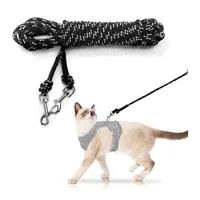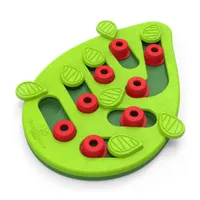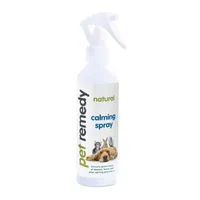Camping with your cat: what to pack and how to do it safely
Want to go camping with your cat? Make sure you read these top tips first.
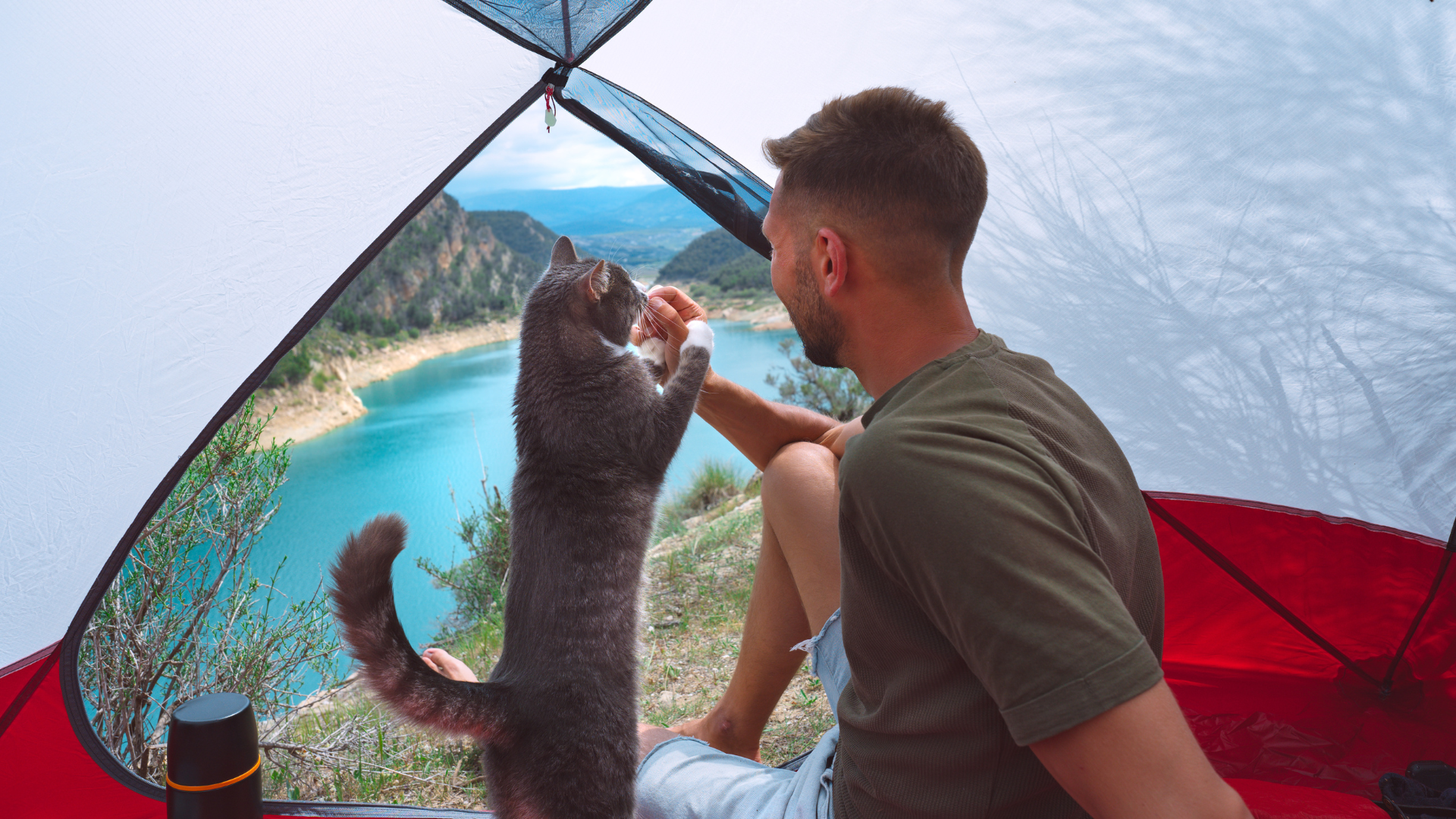
Have you ever considered camping with your cat? If you love an outdoor adventure but hate leaving your fur friend at home, then you might think about taking them along with you.
Traveling with your pet can be lots of fun, but there are a few things you need to consider before setting off, like whether your cat will actually enjoy the trip.
You might love camping in the great outdoors, but it doesn't mean your kitty will feel the same. Whilst some cats love exploring new places, others prefer the safety of their own territory, so it's a good idea to be prepared.
If you think they'll run off or stray too far, you should invest in one of the best GPS trackers for pets to give you peace of mind.
Here's everything you need to know about camping with your cat:
What you need to go camping with your cat
Collar and harness
Remember to pack a secure, light-up collar with an ID tag attached, as well as the best cat harness. To avoid any stress and escape attempts, make sure they're used to wearing these in advance.
Get the best advice, tips and top tech for your beloved Pets
This comfortable cat harness has a lightweight design and is made with padded air mesh. Its available in four different sizes and 13 (!) different colors, so you're sure to find the perfect match.
Litter tray and litter
Ensure your cat has access the the best cat litter box at all times, and don't forget to pack fresh litter and a scoop!
Food and water supplies
It goes without saying, but you'll want to pack a substantial amount of cat food for your travels. You never know if there will be stores in the area, so make sure you bring enough for the time you're spending there. You'll probably want to opt for the best dried cat food or wet pouches as they're less messy than tins.
It's also a good idea to pack bottled water in case the campsite doesn't have fresh water facilities. Cats shouldn't drink from streams, ponds, or rivers, as they might contain parasites that make them unwell.
It's easy to forget bowls, so make sure you pack one for their food and one for their water — collapsible ones are great for camping.
Collapsible Pet Bowls (two pack)
These portable pet bowls are perfect for traveling, thanks to their collapsible design. They're made from BPA-free plastic and come in four different colorways.
Pop-up catio or outdoor run
Vet Dr. Hannah Godfrey says: "If you’re staying in a caravan or an RV, you might be able to keep them safely inside (although you’ll have to take care when opening the doors). However, if you’re staying in a tent or they’re a bit of an escape artist, you’re better off bringing a pop-up catio or other secure outdoor run for them to spend time in."
Long line leash
You'll need a long line leash for walking, or for when you're chilling out at camp. Remember: never leave your cat tied up alone, it can easily get tangled and become a safety hazard.
Tent
If you're camping in a tent, make sure it's double-lined and has double zippers that clip together to prevent any escapes. Avoid models that have mesh at the bottom as these are easy for your cat to claw their way out of.
Toys
Don't forget to play with your cat regularly while you're away; they need 15 to 20 minutes three to four times a day. To ensure they're getting enough exercise and mental stimulation, pack the best cat toys or best automated cat toys.
Nina Ottosson by Outward Hound Buggin' Out Puzzle & Play Cat Toy
Keep your kitty entertained with this fun puzzle toy. Not only does it prevent boredom, but it also activates their natural foraging instincts. My cats adore this toy and it keeps them occupied for a long time! That's why I voted it as the best puzzle toy for cats in our guide.
First aid kit
Dr. Godfrey says: "Whenever you travel with your cat, it’s a good idea to bring a first aid kit containing the essentials that you would need to care for your cat quickly while you’re heading to the nearest vet clinic. Include some dressings, micropore tape, a blanket, and some saline flush so that you can clean and cover any wounds and keep your cat warm and comfortable during the journey to the vet."
Cat carrier
If you're driving to your destination, you'll need to pack one of the best cat carriers for the car journey. This will keep them safe and secure while you travel, and might help to keep them calm. Make sure your cat is used to using it before you set off on any long travels.
Feline behaviorist, Amanda Campion recommends lining it with a soft blanket and using some Pet Remedy spray inside if needed.
Containing valerian and vetiver, this calming spray will help your cat to relax. You can spray it on everything from their carrier to their bed to make them feel happier.
How to go camping with your cat
1. Decide if it's right for your cat: If your cat hates the outdoors, isn't harness trained, spooks easily, and gets anxious in new places, then they're probably not going to enjoy themselves. That being said, you can get them used to these things over time, but you shouldn't rush your cat into anything before they're ready.
2. Choose a cat-friendly campsite: Some campsites don't allow pets, so it's worth checking this before you book.
3. Buy the equipment: Make sure you've got all the essentials you need, from cat bowls to litter boxes.
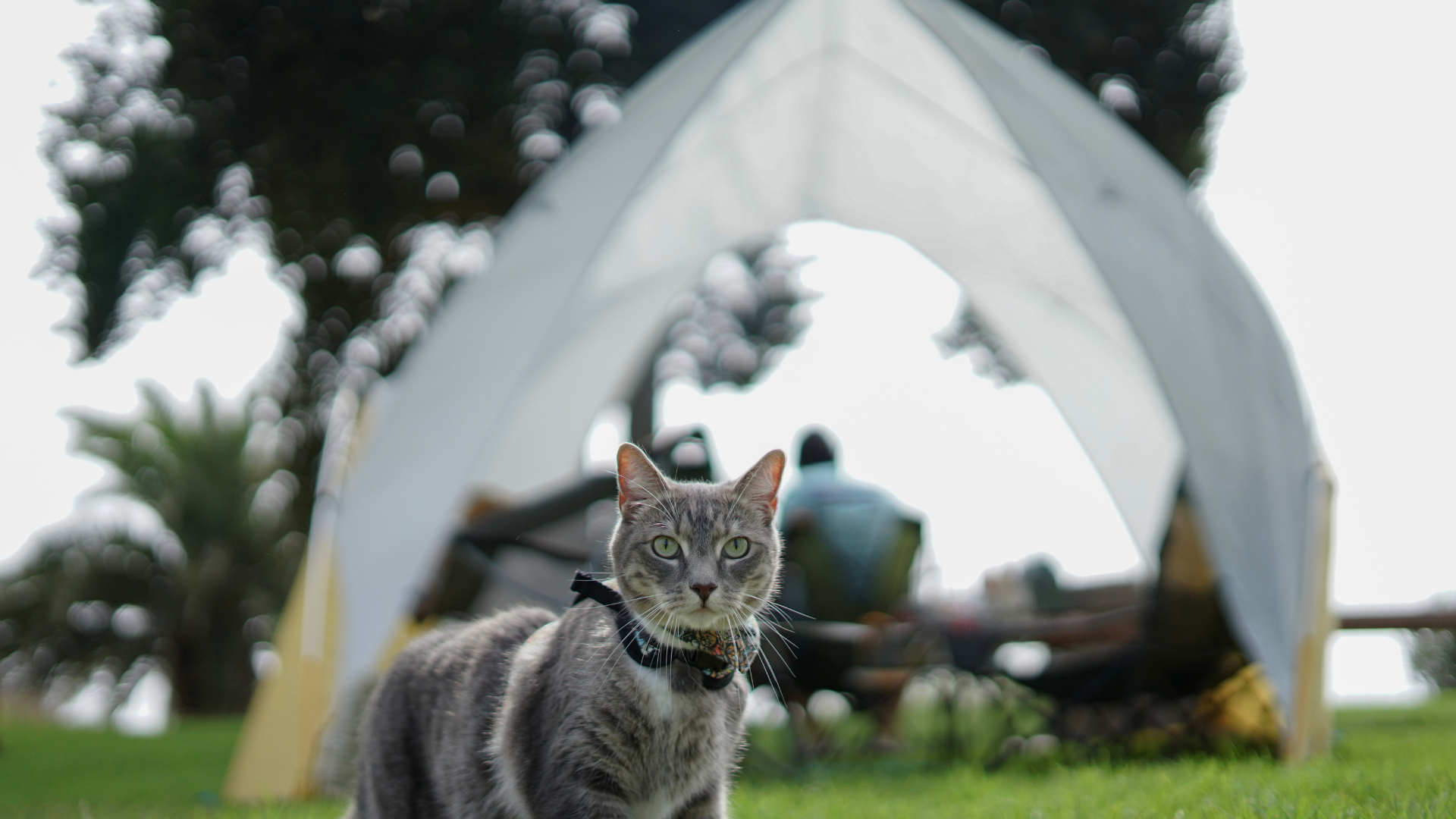
4. Ensure your cat is trained: Before you book, make sure you've trained your cat to wear a harness, use a leash, and go on walks. You might want to practice camping in your yard to get them used to it.
5. Learn about cat safety: Get familiar with poisonous plants and dangerous animals in the area where you're camping - plus what to do if you encounter them.
6. Vaccinate your cat: Ensure your cat's vaccinations are all up to date, and check with your vet if they'll need any new ones for traveling.
7. Make sure your cat is microchipped and has an ID tag: This will make things easier if they go missing.
Want to learn more about traveling with a cat? You might find this guide helpful. Or, if you're planning on venturing a bit further, you might be interested in reading our top tips for flying with a cat.

Hannah graduated from the Royal Veterinary College in 2011 and began work straight away at a busy mixed practice. Initially, she treated all species, but focused on small animals from 2014. She has a passion for soft tissue surgery, ultrasound, and canine and feline dentistry, having completed additional training in these areas.

Megan is a Staff Writer at PetsRadar, covering features, reviews, deals, and buying guides. She has a wealth of experience caring for animals, having grown up with dogs, cats, horses, guinea pigs, and more throughout her life. She studied BA Journalism at the University of Westminster, where she specialized in lifestyle journalism and was editor of Smoke Radio’s lifestyle website. Megan works alongside qualified vets and accredited trainers to ensure you get the best advice possible. She is passionate about finding accurate and helpful answers to your pet-related questions.
